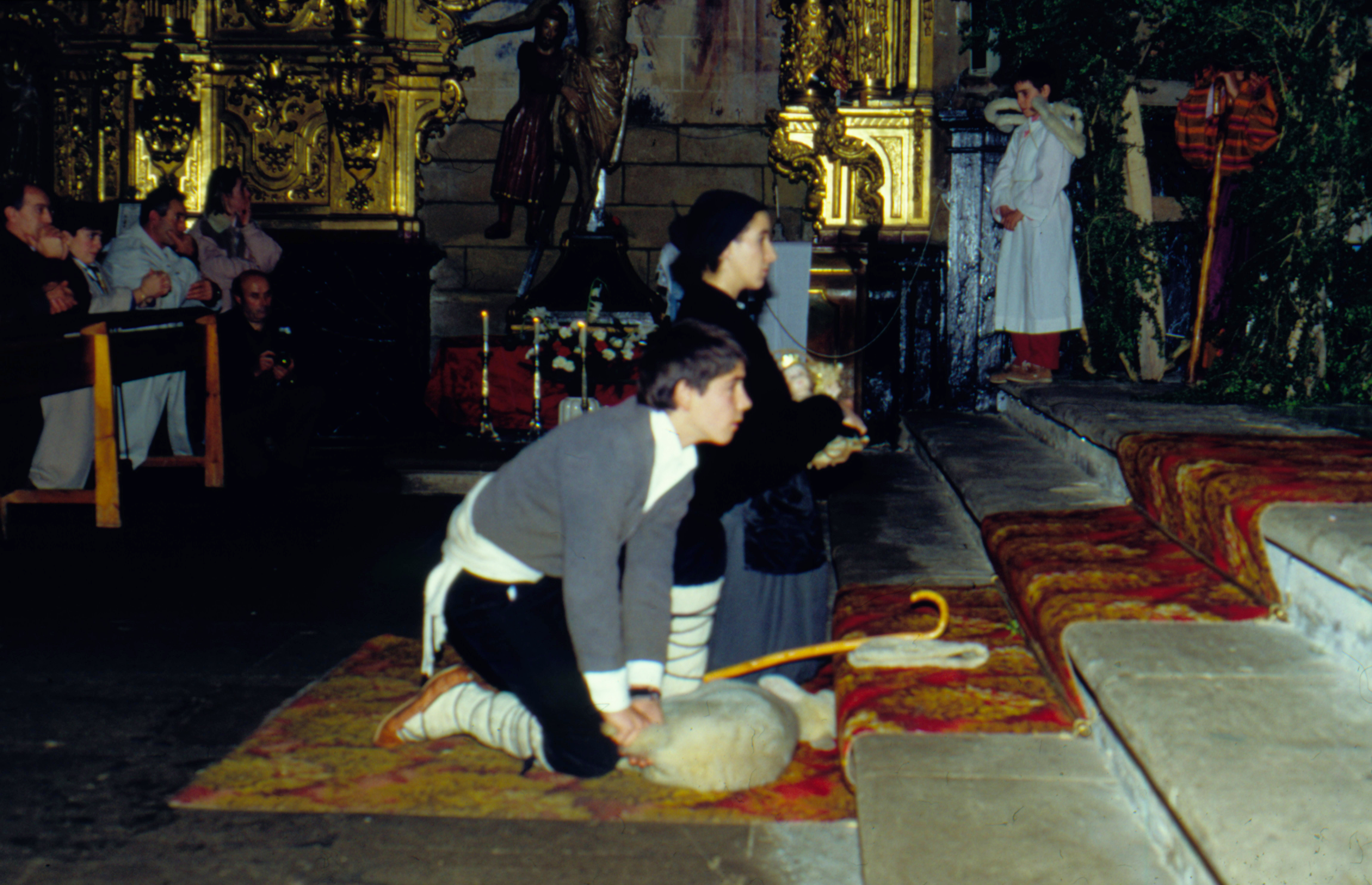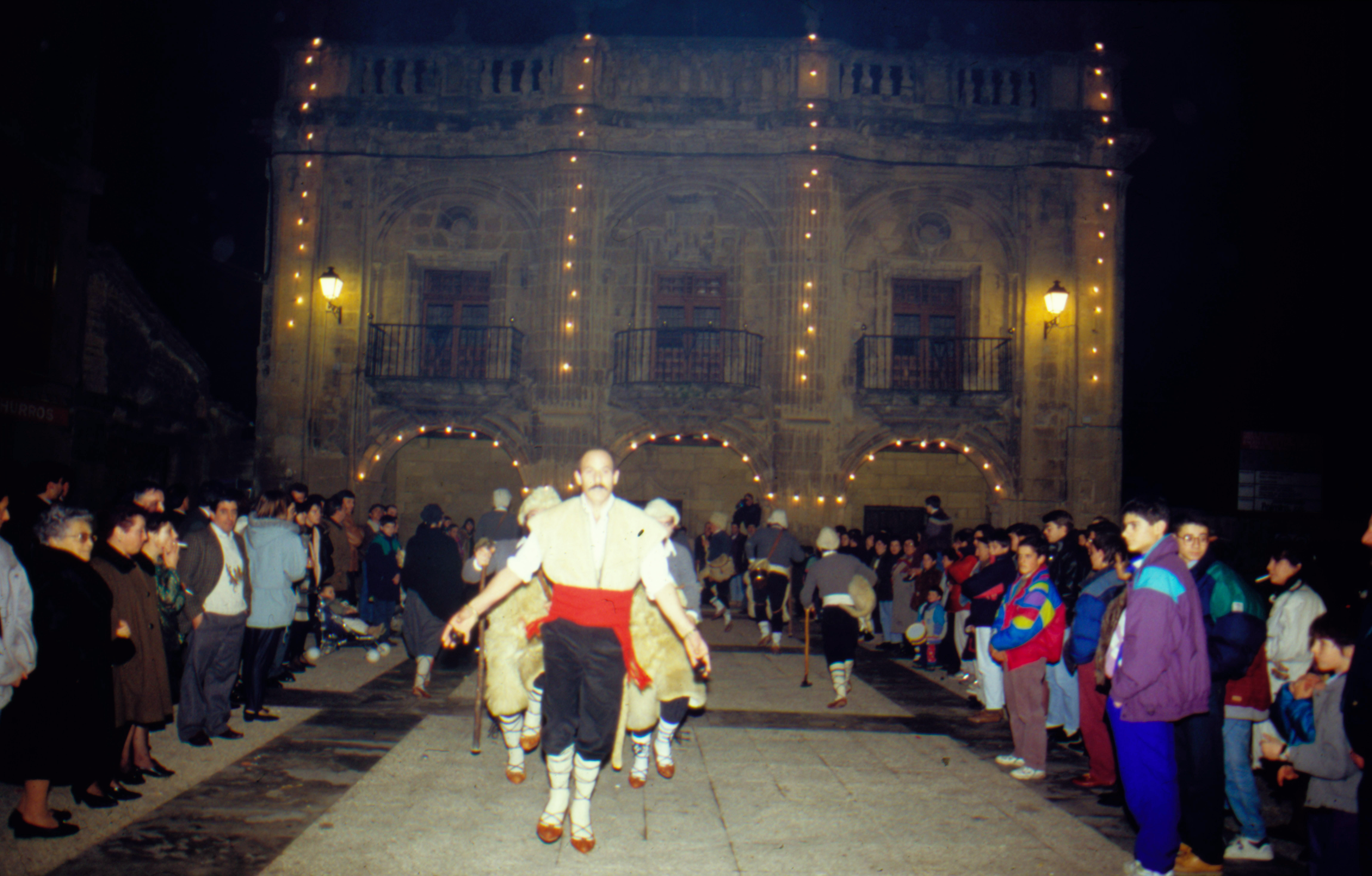Basque ethnography at a glance
In this city of the Rioja Alavesa region, the traditional Dance of the Shepherds, originally held at Midnight Mass on Christmas Eve, is nowadays represented at seven in the afternoon on 24 and 25 December.
The story unfolds at two different venues: the church of the Assumption of Our Lady and La Paz Square in front of the city hall. A living nativity scene is staged. As a child angel announces attendees the birth of Baby Jesus in Bethlehem, the shepherds sing Christmas carols and dance while inviting the members of the council to enter the temple and worship the newborn.
A rather special shepherd named Cachimorro directs and guides the group of dancing shepherds inside the church. They all dance their way in. The shepherds and Cachimorro sing Christmas songs and dance on several occasions during mass. Enacted in pairs following the intercessions, the Adoration of the Shepherds is surely the most significant episode. They go up to the chancel and kneel down to kiss Baby Jesus, who receives a life little lamb as an offering. At the time of the consecration of the bread and wine, the lamb bleats three times at each offering when the grandfather shepherd twists its tail.
The oldest documented records on such custom date back to 1713. Back then a stage was built in church for the Christmas pageant.
Shepherding has always been present in everyday life in Labastida. In the daytime shepherds were too busy tending their flocks and could not attend the various religious services, so they performed this dance when night fell. Similar events called pastoradas or corderadas take place in other localities of Castile and León.
Nativity plays are medieval in origin. The narrations and songs in them recount stories from the gospels enhancing the canonical texts with apocryphal features. Tropes or additions of music and lyrics to twelve-century Roman liturgical offices are assumed to have been the root from where they grew. The Adoration of the Shepherds or Officium pastorum stemmed from old tropes about specific liturgical subjects dramatised in the Christmas cycle. The verses and chants are compositions both Renaissance and Baroque in style.
The main characters of the Christmas Dance of the Shepherds in Labastida are Cachimorro, twelve dancers, the grandfather and the young shepherd girl. Saint Joseph, the Virgin Mary and Baby Jesus complete the team of neighbours acting on the nativity scene installed within the church.
Cachimorro, a funny character and symbol of the feast and folklore of Rioja Alavesa, leads the shepherds in the singing of the carols and dancing performance. Dressed as a shepherd, a red sash distinguishes him from the rest. He holds castanets in his hands to compel the attention of fellow dancers and signal the beginning of songs and dances. Rhythm is kept by beating the ground with sticks. One of the most eagerly-awaited movements is popularly known as pasadillas.
Participants and public return to the city hall square after mass and set light to a bonfire made of the hay contained in the shepherds’ leather pouches. They cook garlic soup over the open fire and give it to eat first to Baby Jesus and then to everybody else. More songs are recited as they dance anticlockwise around the bonfire. Their farewell to the council delegation brings this singular tradition to a close.
José Ángel Chasco – Etniker Álava – Etniker Euskalerria Groups
Translated by Jaione Bilbao – Language Department – Labayru Fundazioa
References for further information: José Ángel Chasco. La Adoración de los Pastores de Labastida and www.euskomedia.org.



